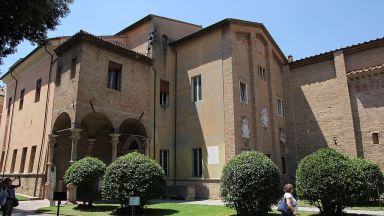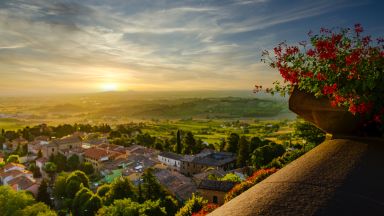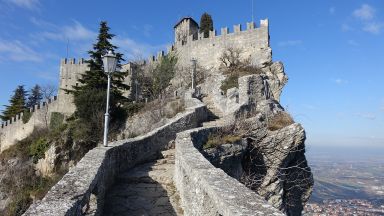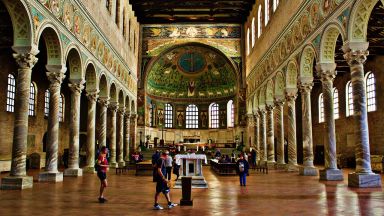National Museum of Ravenna
Historic Building and Museum in Ravenna

The National Museum of Ravenna is located within the premises of the former Benedictine monastery of San Vitale, which is situated adjacent to the renowned 6th-century Basilica of San Vitale. Since 1885, this museum has been a custodian of diverse and significant collections.
The museum’s origins trace back to the 18th century when it began as a collection assembled by knowledgeable monks from various large city abbeys, especially the Camaldolese monks of Classe. These monks had a keen interest in gathering objects of artistic, ancient, and naturalistic value.
Today, the National Museum of Ravenna showcases a wide range of artifacts, including important archaeological discoveries, Byzantine sculptures, valuable items related to UNESCO-protected monuments, and extensive collections of applied arts. Its location within the two Renaissance cloisters and the abbatial spaces provides a captivating atmosphere that adds to its appeal as a must-visit attraction in Ravenna. It stands as a testament to the city’s historical artistic splendor.
The museum’s exhibition spaces are organized as follows:
Ground Floor:
- The first and oldest cloister, dating from the end of the 15th to the beginning of the 16th century, houses Roman lapidary relics, such as epigraphs, bas-reliefs, stelae, and sarcophagi dating from the 1st to the 3rd century AD. Notable pieces include the “Apotheosis of Augustus” and ancient Greek herms found in the sea near Ravenna by local fishermen.
- The second cloister contains stony artifacts spanning from the 5th century AD to the Baroque period, including the “Traditio Legis” sarcophagus and column capitals from Theodoric’s era, often referred to as “butterfly” capitals.
First Floor:
- Accessible via the monumental staircase designed by monk Benedetto Fiandrini in 1790, the first floor houses diverse artifacts with the common aim of showcasing Ravenna’s historical grandeur.
- Highlights include small Renaissance bronzes and plaques, furniture from the Moors pharmacy dating back to the 18th century, rooms dedicated to the imperial Church of Santa Croce, research findings related to the Palatium (the Imperial Palace and Theodoric’s court), and treasures from San Vitale and San Michele di Africisco.
- The museum also features an ivory collection, including the 5th-century panel depicting Apollo and Daphne, the 6th-century Murano diptych, the Classense Library’s icon collection (featuring works like the Crucifixion by Paolo Veneziano), and a ceramics collection composed of both purchased and donated pieces.
- The visit concludes in the large refectory of the former monastery, where visitors can admire a fresco cycle taken from the Church of Santa Chiara (now Luigi Rasi Theatre). This cycle, created by Pietro da Rimini, one of the most prominent painters of the 14th-century Rimini school, adds a captivating historical dimension to the museum experience.
The National Museum of Ravenna appears in our Complete Guide to Visiting Ravenna!
This website uses affiliate links which may earn a commission at no additional cost to you!
Visiting National Museum of Ravenna
Tuesday, Thursday and Friday: 8.30 am – 7.30 pm
Wednesday: 2 pm – 7.30 pm
Saturday and Sunday: 8.30 am – 2 pm
Every 1st Sunday of the month: 8.30 am – 7.30 pm (free admission)
€7
Nearby Attractions
- Basilica of San Vitale (0.0) km
Basilica in Ravenna - Mausoleum of Galla Placidia (0.1) km
mausoleum in Ravenna - Domus dei Tappeti di Pietra (House of the Stone Carpets) (0.2) km
Historic Site and Museum in Ravenna - Piazza del Popolo, Ravenna (0.4) km
Square in Ravenna - Battistero Neoniano (o degli Ortodossi) (0.5) km
Baptistery in Ravenna - Arian Baptistery (Battistero degli Ariani) (0.5) km
Baptistery in Ravenna - Museo Dante, Ravenna (0.6) km
Historic Building and Museum in Ravenna - Archbishop's Museum, Ravenna (0.6) km
Museum in Ravenna - Archbishop's Chapel of St. Andrew (0.6) km
Church in Ravenna - Dante Alighieri’s Tomb (0.6) km
Tomb in Ravenna


